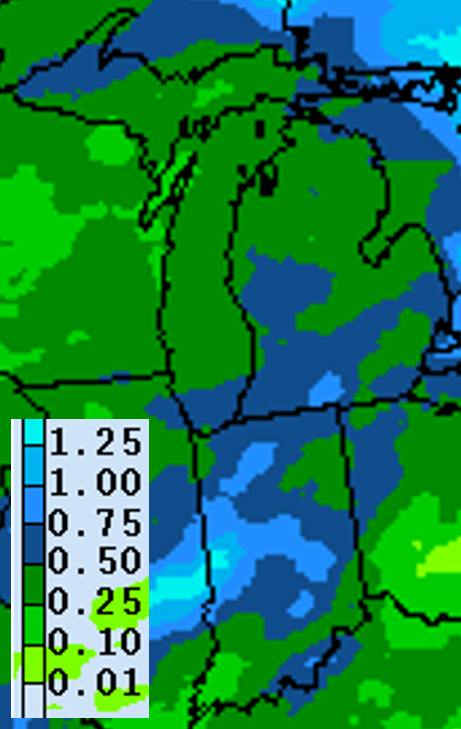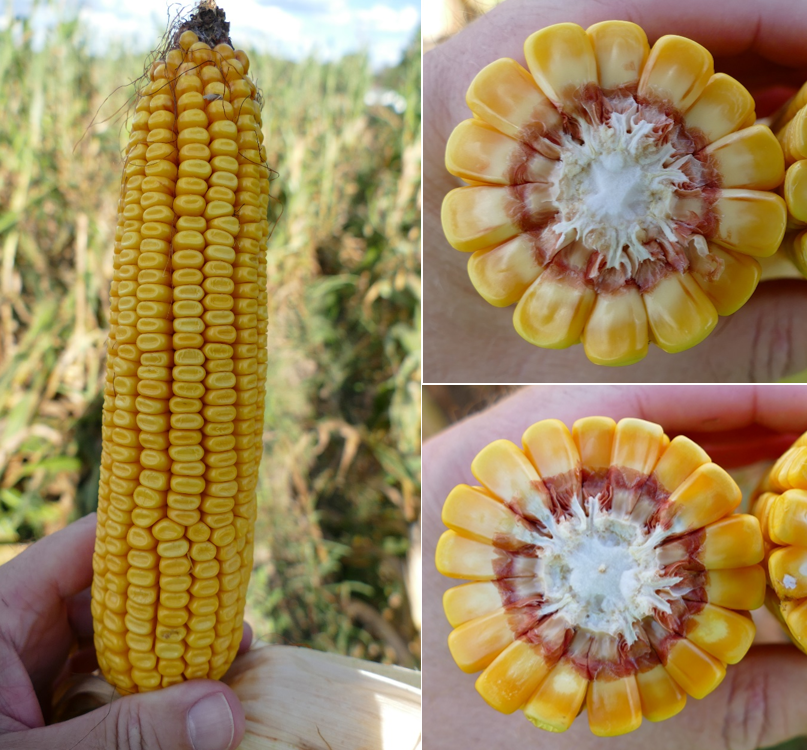Southwest Michigan field crops update – Sept. 9, 2021
Corn and soybean in many fields are approaching physiological maturity. Upcoming warm weather will accelerate crop progress, resulting in an early harvest season this year.

Weather
Temperatures this past week were near normal although our surplus of heat units remains around two weeks ahead. Michigan State University Extension agriculture climatologist Jeff Andresen says that weather this past week has resulted in ideal conditions for grain dry-down. He mentioned that in a corn grain maturity study in which he is involved, they measured moisture losses as high as 2-4% per day. As mentioned previously in this report, the upward trend in summertime temperatures over the past century has occurred primarily in rising nighttime temps rather than higher daytime temps. As the graphs below indicate, average daily maximum temperatures in Michigan during the summer months have increased by only about one degree since 1895 while average daily minimum temperatures have increased by about three degrees. Daily low temperatures will return to the 60s this coming week.
The heat will be returning with daytime highs in the upper 80s over this weekend and into next week. Temperatures will continue to be above normal through at least the third week of September.

Precipitation this past week, particularly this past Tuesday, was a welcome site for many although it was less than half of normal for most parts of the region. Reports of less than 0.5 inch to nearly 2.5 inches of rain were reported within the same county from this past rain event. Over the past 30 days, rainfall amounts have ranged from less than 50% of normal to 50% above normal. Currently, a high pressure system is sitting over Michigan bringing clear skies through the weekend.
The next chance of rain begins Sunday night with nearly daily chances through the middle of next week. The 6-10 day and 8-14 day outlooks are currently conflicted with regards to precipitation, and Andresen says the confidence level of these models is low, so we have little guidance regarding rainfall during the middle of this month.



Crops and pests
Corn in the region is in the late dent stage (R5) generally between half milk line and black layer. Corn closer to half milk line will require an additional inch of water this coming week while those fields at or near black layer will require only two-thirds of an inch. No new reports of widespread lodging issues have come in, but the need for weekly scouting to assess stalk strength and disease pressure from tar spot and other diseases is recommended. Silage chopping has been underway for a little over a week in the region and should be wrapping up in the next one to two weeks.

Soybean fields continue to progress quickly toward maturity with some fields still at full pod (R6) and mostly green while others are approaching full maturity (R8, 95% of the pods have reached their full mature color). Crops closer to R6 still need nearly 1.25 inches of water in the coming week, those at beginning maturity (R7, one normal pod on the main stem has reached its mature pod color) needing 1 inch, and those nearing R8 will require only 0.25 inch. We expect early-maturing, early-planted fields to be harvested before the end of the month.
Weeds
Fall weed scouting and management considerations were the topic of this week’s MSU Extension Field Crops Virtual Breakfast with weed specialist Christy Sprague. Dry conditions early in the season limited the efficacy of preemergence herbicide applications while heavy rainfall from mid-June into July hindered timely postemergence applications. Both of these challenges resulted in numerous weed control problems this year. Although herbicide applications are no longer an option in most cases, Sprague recommended scouting fields now to make plans for possible fall herbicide programs as well as spring programs. She also talked about possible desiccant applications as harvest aids, controlling weeds ahead of wheat planting, and sending in samples to analyze for herbicide resistance. If you were not able to join the session, you can access recordings on the Virtual Breakfast website.
MSU Extension field crops entomologist Chris DiFonzo reported that she has not received any new reports of fall armyworm in the past week. Farmers have been taking final hay harvest over the past few weeks. It is recommended that final cuttings be completed by mid-September at the latest to ensure the least impact on ability to overwinter and on future yields. DiFonzo said that most armyworm have pupated already, and it is expected that moths will emerge over the next couple of weeks. She said it is uncertain whether they will be able to lay eggs yet this year in emerging grain crops and forages as this is normally a tropical pest. Hopefully we are done with this pest for the year.
Irrigation
Join us for the final MSU Irrigation Webinar on Sept. 15. Topics will include maximizing irrigation energy efficiency, water use registration and reporting, and Michigan site specific review options and the alternatives for registration. Cost is free. Register online to receive the link which will be used for all episodes.



 Print
Print Email
Email